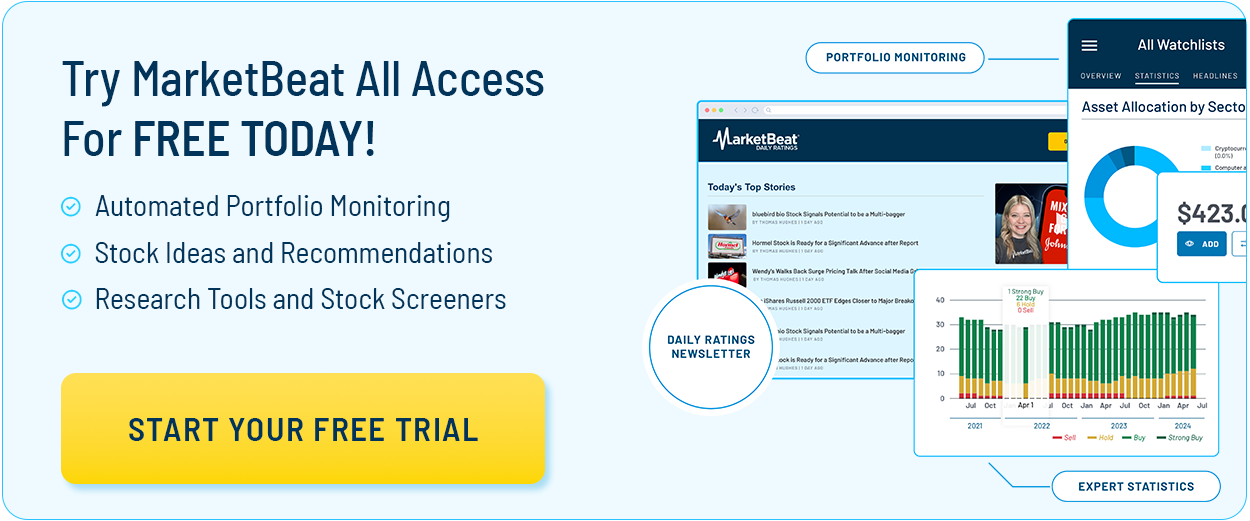Your Pre-IPO Access Approved ✅ (From Wyatt Investment Research)
Snag These 3 Bargain Tech Stocks Before They Pop 
As the S&P 500 index becomes uncertain in its price action amid rising economic and geopolitical tensions in the United States, the technology sector takes the lead in terms of price action and growth. Fundamentally, most companies in this space are largely immune to the concerns and risks prevalent in today’s stock market environment. However, not all of them have enjoyed the same treatment. Most of the high-profile names in the semiconductor and chipmaking industry have gotten the bulk of the public’s attention (and capital) in recent quarters, leaving other great businesses behind while at it. This gap created by attention and price action is one of those rare opportunities that investors can often take advantage of and use to give their portfolios a new run higher. This is why considering discounted names in the space can be a lucrative task, and where investors will come up with stocks like Adobe Inc. (NASDAQ: ADBE), DocuSign Inc. (NASDAQ: DOCU), and even Block Inc. (NYSE: XYZ) as the ones with the best stories and upside potential for their positionings during the next few quarters and even the rest of the year. Make this one trade at 2:59 PM on Friday afternoon, and you'll thank me on Monday morning. Give me the details Adobe’s Business Model Will Come in Handy The chairman of the Federal Reserve (the Fed), Jerome Powell, recently stated that the United States economy is set to slow for the rest of 2025, and economic uncertainties created by policy will likely play a factor in this slowing. As of right now, the party is still going in growth stocks within technology, but if this prediction is accurate, then the music is likely set to stop. When and if it does stop, investors at large will want to find names with a predictable and stable stream of cash flows to protect them from further uncertainty and earnings volatility, and that is where Adobe’s business model comes into play. As a subscription-based software company, Adobe can more accurately forecast its financials. Considering that the stock now trades at only 65% of its 52-week high, it presents an attractive proposition with an asymmetric return profile, where the upside potential greatly outweighs the downside risk in the stock. In fact, the immunity that drives other major names in technology to rally this much also applies to Adobe, which is why there is so much upside to it. As of late June 2025, analyst Gil Luria from DA Davidson reiterated a Buy rating for Adobe stock, also placing a valuation of up to $500 per share on the stock. From where it has fallen to today, this projection implies Adobe can give investors as much as 31% in terms of upside potential. A Premium in DocuSign’s Services Like many other names in their respective fields, DocuSign is a pioneer in how businesses and entities complete their legal and binding paperwork. Remote signing not only saves paper but also time and the chance of making errors, and eliminates the risk of documents being lost or manipulated. These features pose a great benefit to today’s global economy, which is becoming more digitized by the day and therefore calling on services like DocuSign to get it there. By trading at a low of 70% of its 52-week high, the risk-to-return profile starts to mimic that of Adobe’s. This means the potential downside may have already been priced into the stock today, as essentially, these external events should have no negative impact on what happens to DocuSign’s cash flows and revenue. This could also explain why the market is willing to pay an additional premium for the stock compared to its peers. The computer sector now trades at an average price-to-earnings (P/E) ratio of 35.3x today, whereas DocuSign has managed to command a multiple of up to 54.8x, a premium justified by its market share in the remote signing business, as well as the high margins and subscription-revenue model it offers investors during uncertain times. How to Collect Up To $5,917/mo From Trump's Made In USA Boom
Thanks to President Trump's America-First policies, a historic wave of investment is flooding back into the United States: Apple committing a colossal $500 billion to build new U.S. factories. Microsoft injecting $80 billion into domestic manufacturing. Nvidia moving critical chip production back to America.
But here's the hidden opportunity: There's now a groundbreaking way for you to start collecting monthly checks from these very same companies— checks that could reach as high as $5,917 each month.
Don't miss your chance to participate directly in America's industrial comeback. Watch Now to Learn How to Get Your First Check in 30 Days Stablecoins Drive Earnings Growth in Block Stock Recently, some of the economy’s largest online retailers announced that they would start to move away from traditional payment processors and instead develop their own version of a stablecoin to expedite payment processing, among other benefits (like claims, disputes, and fees). Wall Street analysts may be onto something here, as they now forecast up to $0.78 in earnings per share (EPS) in Block’s fourth quarter of 2025, a significant jump of 200% from today’s reported $0.26 in EPS. The reason may be that Block is one of the best-positioned names to offer a stablecoin environment, which can then be directly tied to these commerce platforms. Even if it's speculative, as it's an ongoing and early development, it’s not something that investors should ignore. In fact, even a whiff of this capacity being a rumor could turn the stock into a new bull run, considering it only trades at 66% of its 52-week high levels today, creating yet another fantastic risk-to-reward ratio for investors. In fact, during the same month that the traditional payment processors fell by roughly 10% each, Block stock managed to turn in an 11.2% return, justifying the consideration of this stablecoin adaptation scenario as a potential road to take. Written by Gabriel Osorio-Mazilli Read this article online › Read More: 
Did you like this article?  
|